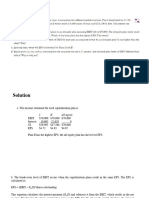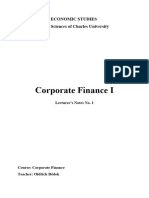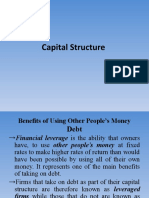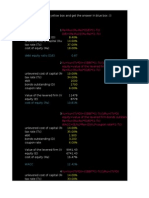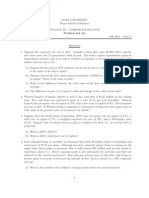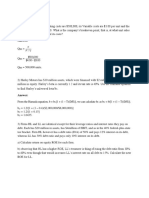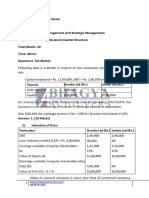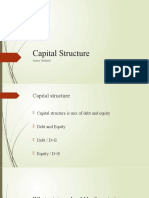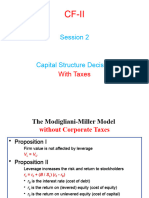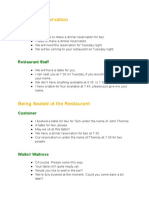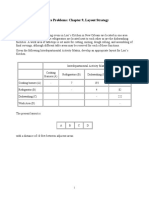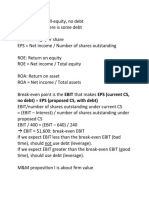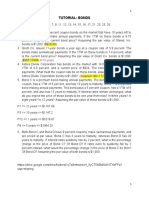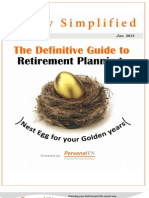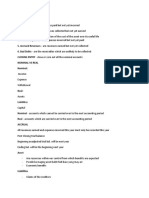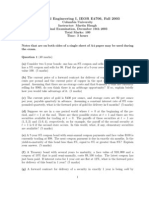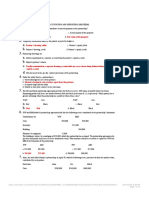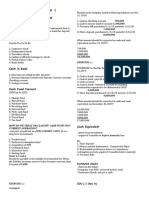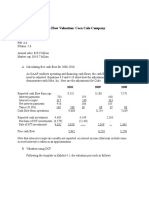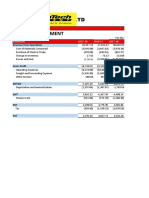0% found this document useful (0 votes)
169 views2 pagesCF - Questions and Practice Problems - Chapter 16
This document contains sample questions and practice problems from a corporate finance textbook chapter on capital structure.
Question 3 discusses how a firm's required rate of return on equity increases as the debt-to-equity ratio increases, since more debt leads to higher financial risk. Question 4 notes that interest payments are tax deductible, unlike dividend payments.
Several practice problems calculate financial metrics like net income, earnings per share, and firm value under different capital structures to demonstrate the effects of leverage and taxes on the cost of capital. Other questions determine the weighted average cost of capital for firms with varying amounts of debt.
Uploaded by
Lâm Thanh Huyền NguyễnCopyright
© © All Rights Reserved
We take content rights seriously. If you suspect this is your content, claim it here.
Available Formats
Download as DOCX, PDF, TXT or read online on Scribd
0% found this document useful (0 votes)
169 views2 pagesCF - Questions and Practice Problems - Chapter 16
This document contains sample questions and practice problems from a corporate finance textbook chapter on capital structure.
Question 3 discusses how a firm's required rate of return on equity increases as the debt-to-equity ratio increases, since more debt leads to higher financial risk. Question 4 notes that interest payments are tax deductible, unlike dividend payments.
Several practice problems calculate financial metrics like net income, earnings per share, and firm value under different capital structures to demonstrate the effects of leverage and taxes on the cost of capital. Other questions determine the weighted average cost of capital for firms with varying amounts of debt.
Uploaded by
Lâm Thanh Huyền NguyễnCopyright
© © All Rights Reserved
We take content rights seriously. If you suspect this is your content, claim it here.
Available Formats
Download as DOCX, PDF, TXT or read online on Scribd
/ 2





